Aluminum scaffolds are a practical tool workers can use to be productive at height. When you follow the appropriate safety precautions, it becomes a valuable resource that leads to new economic opportunities for everyone.
When following the key points in this safety guide, it is essential to look at them through the lens of local rules and regulations. Because aluminum scaffold construction and use expectations can vary, it is up to individuals and organizations to ensure they comply.
Here are the safety standards to review if you’re using aluminum scaffolds in today’s working environment.
1. Fall Protection
Aluminum scaffolds are required to have a fall arrest system or fall protection available for anyone more than ten feet above a lower level. Guardrails are the typical item used for this purpose, although exceptions exist for single or two-point adjustable products.
If you have a single- or two-point adjustable, suspended scaffold, a guardrail, and a personal fall arrest system are typically mandatory.
2. Guardrail Height
The top rail height for an aluminum scaffold placed into served after 2000 must be at least 38 inches. It can be up to 45 inches high and still be in compliance with most regulations. This standard applies to all new products purchased today.
If you have an older scaffold that was manufactured before 2000, it can be 36 inches high.
3. Crossbracing
If the crosspoint of your crosspacing is used as a top rail, it must be at least 38 inches above the work platform. It can be up to 48 inches under most regulations.
4. Midrails
When you have aluminum scaffolding built for a job site, the midrails must get installed about halfway between the platform surface and the top rail. When the crosspoint of crossbracing gets used for this purpose, it must be between 20 to 30 inches above the working surface.
5. Footings, Platforms, and Braces
The footings for an aluminum scaffold must be level. They should also be capable of supporting the entire load expected on the product. It’s expected for the uprights, frames, poles, and legs to bear on mudsills and base plates.
The platforms must be fully decked or planked when using a supported platform system. Workers must have a clear walking path that allows them to work from a stable surface. In most jurisdictions, you cannot use a safety harness to replace the decking or planking requirement.
Supported scaffolds and their components that have a 4:1 height-to-base ratio or greater must have tipping restraints installed. This element can include bracing, tying, or guying ties.
6. Scaffold Capacity
The scaffold components and overall structure must support at least four times the intended maximum load to comply with current OSHA standards. That means if you expect 4,000 pounds to be on the product, you’d need to install a 16-ton capacity unit.
Any suspension scaffold rigging must be at least six times the intended load to comply with the current safety standards.
7. Training and Inspection
Employers that train their workers on scaffold hazards and the procedures to control them must follow local rules and regulations. It is up to each company to provide this resource to their workers, whether it is from internal staff or through a third-party provider.
Before each shift, a trained and competent inspection must review the scaffold and its components to determine if any defects are present. If no one from a company can perform this requirement, a third-party provider must complete this work and fill out the associated reports.
8. Building and Dismantling
When someone is building or dismantling a supported scaffold, a trained person must determine the feasibility of providing safe access. If the product’s height reaches the minimum regulatory height standard, this process must also incorporate fall protection for the included operations.
Who Is a Competent Person for Inspecting a Scaffold?
If you’re unsure who qualifies as a competent provider for inspection, training, erection, and dismantling, the first step is to review OSHA’s current definition.
“A competent person is one who is capable of identifying existing and predictable hazards in the surroundings or working conditions, which are unsanitary, hazardous to employees, and who has authorization to take prompted corrective measures to eliminate them.”
It’s the last component that often gets a business in trouble. If your inspector must report conditions to a superior instead of taking immediate action, you’re out of compliance with the safety standard.
Aluminum scaffolds are an essential resource that can help you get stuff done. When you know how to use this resource safely, everyone can come home at the end of the day after a long day of productive work.
-
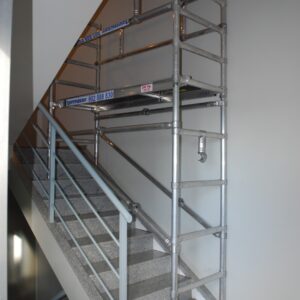
Stairwell Scaffold
-

400 System Scaffold Tower
-

300 System customized double width
-
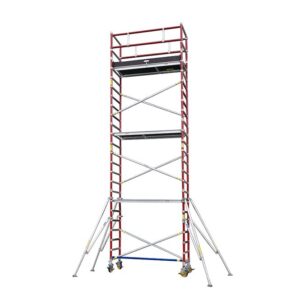
300 System customized simple width
-

300 System double width
-
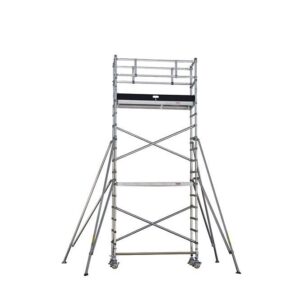
300 System simple width
-

Adjustable legs part No.404
-
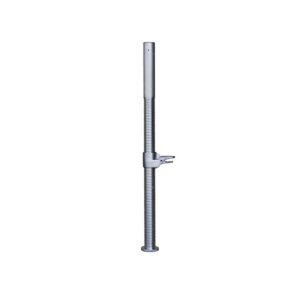
Adjustable legs part No.406
-

Adjustable legs part No.408
-
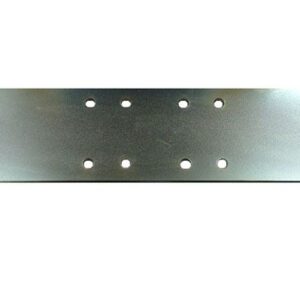
Alu-Bridge part No.662
-
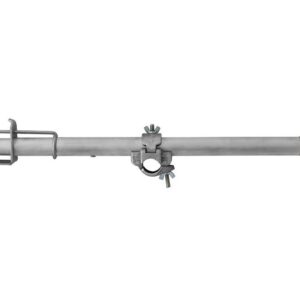
Alu-Bridge part No.701
-

Alu-Bridge part No.702

0 Comments